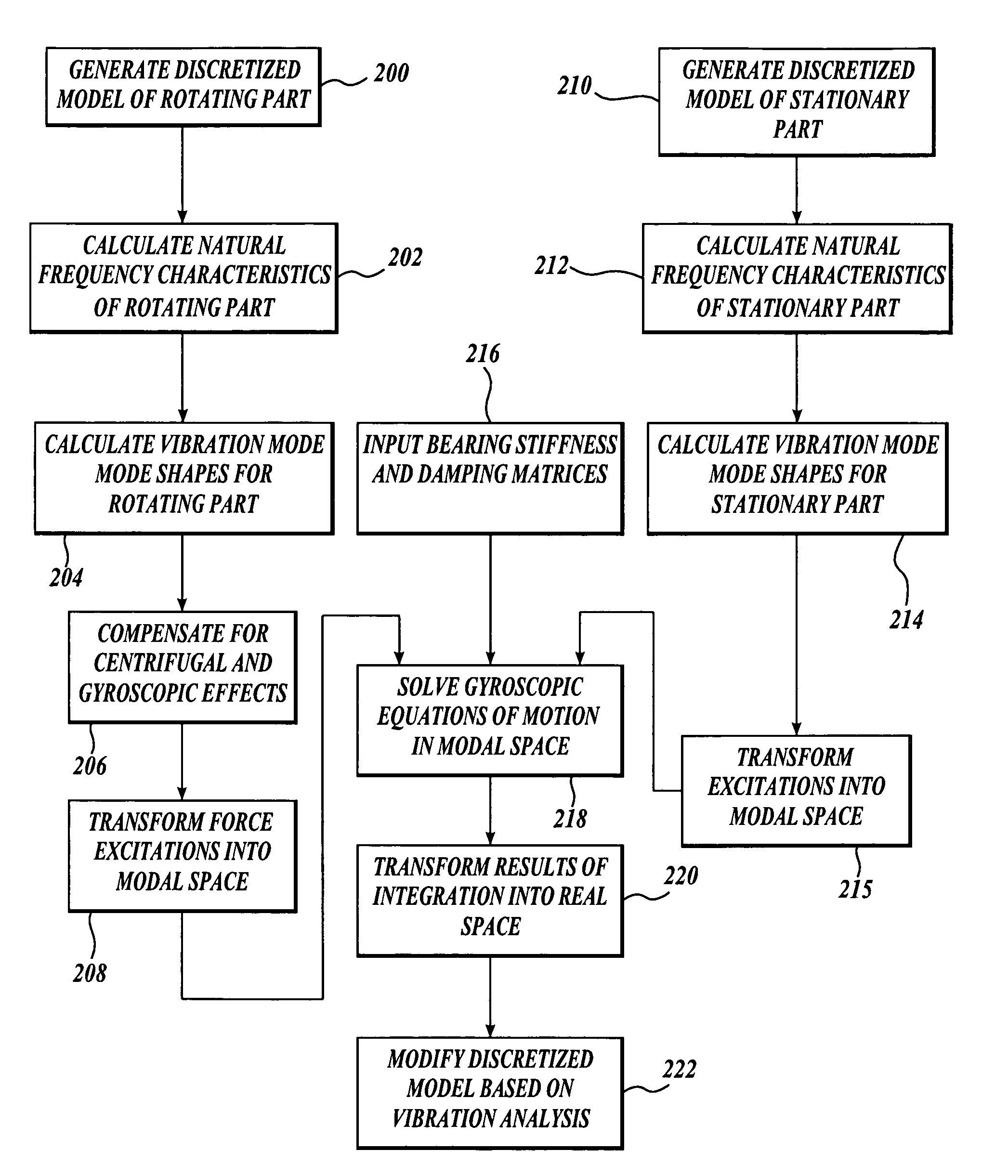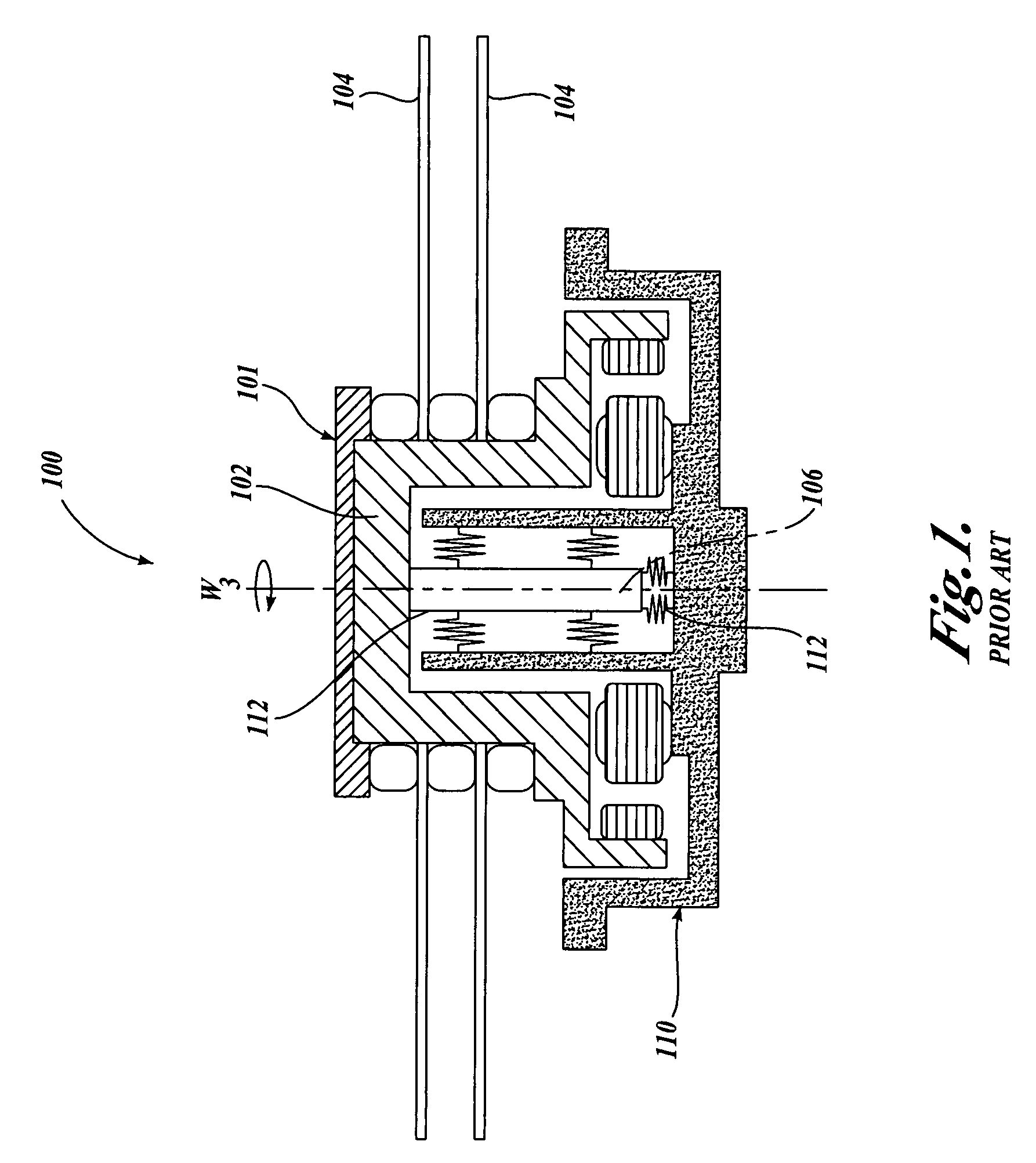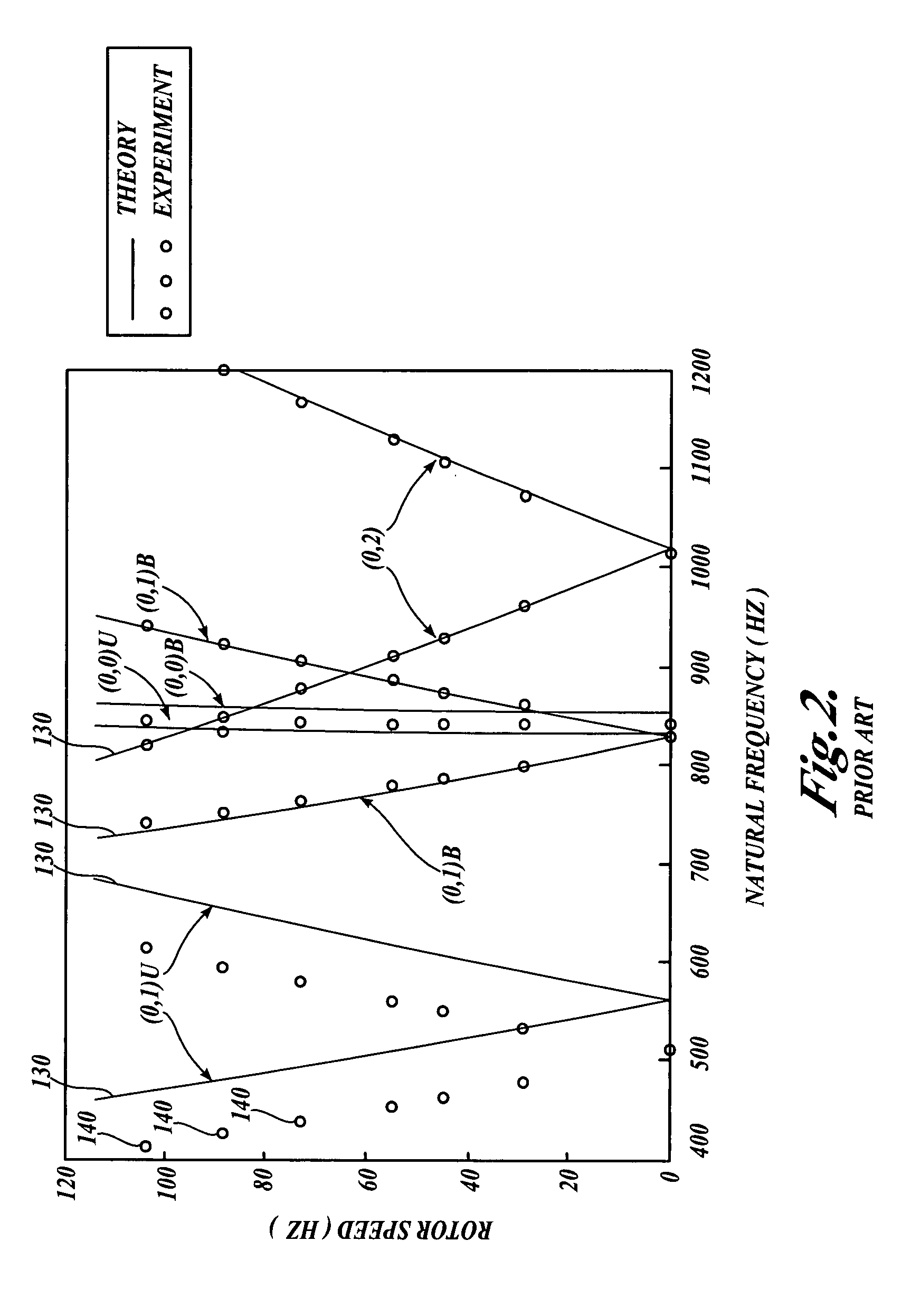Method for predicting vibrational characteristics of rotating structures
a technology of rotating structures and vibration characteristics, applied in the field of methods and systems for calculating the vibrational characteristics of devices, can solve the problems of inability to accurately predict responses of vibration analysis inability to apply vibration analysis models developed for one application to other applications, and inability to accurately predict responses of vibration analysis models based on simplified geometry.
- Summary
- Abstract
- Description
- Claims
- Application Information
AI Technical Summary
Benefits of technology
Problems solved by technology
Method used
Image
Examples
Embodiment Construction
[0023]A method for calculating the vibrational characteristics of devices having a rapidly rotating component, such as a rotor, will be described with reference to the figures, wherein like numbers indicate like elements. Vibrational characteristics, as used herein, includes the natural frequencies and mode shapes of the device, and may also include the mechanical responses of the device to externally applied forces and / or prescribed motions applied to a device having a flexible rotating component. The disclosed method is suitable for analyzing apparatuses such as hard disk drives, jet engines, motors, spin-stabilized satellites, and the like. As will be readily apparent to persons of skill in the art, the accurate analysis and prediction of the vibrational response of such apparatus—such as the elastic deformation and relative motion between the various elements, the frequency response, time-domain response, natural frequency, vibration mode shapes and damping factors—are important...
PUM
 Login to View More
Login to View More Abstract
Description
Claims
Application Information
 Login to View More
Login to View More - R&D
- Intellectual Property
- Life Sciences
- Materials
- Tech Scout
- Unparalleled Data Quality
- Higher Quality Content
- 60% Fewer Hallucinations
Browse by: Latest US Patents, China's latest patents, Technical Efficacy Thesaurus, Application Domain, Technology Topic, Popular Technical Reports.
© 2025 PatSnap. All rights reserved.Legal|Privacy policy|Modern Slavery Act Transparency Statement|Sitemap|About US| Contact US: help@patsnap.com



